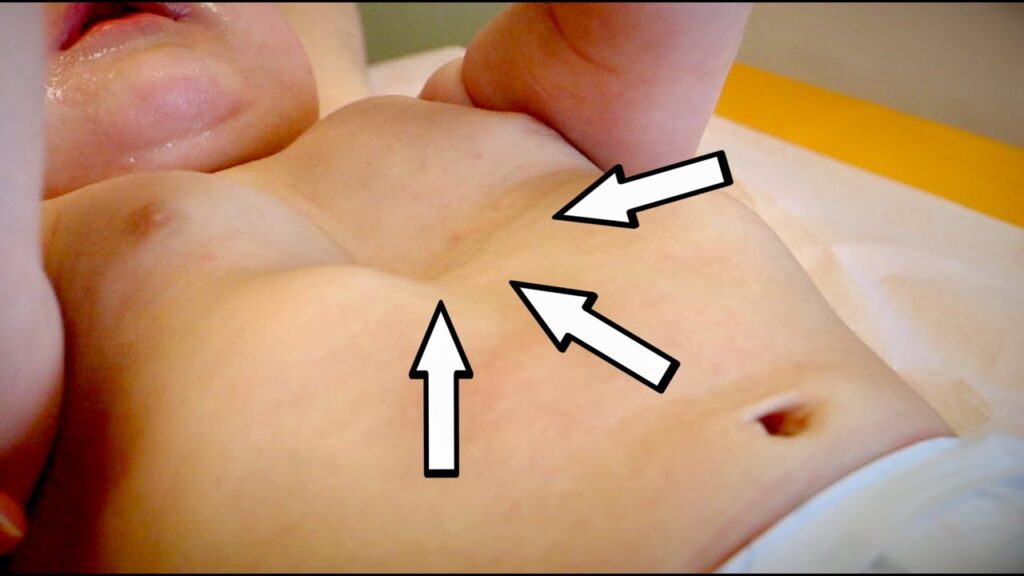Chest & Lungs
Prominent Xiphoid
There may be a small, firm lump at the midline of your newborn’s chest. This is just the bottom of the breastbone (Xiphoid Process), and is a benign condition. This lump will disappear over time as your baby grows.

Funnel chest (Pectus Excavatum)
This condition, while visually concerning, is usually not serious. There is a small depression in the chest, which becomes deeper when breathing in. It is caused by improper forming of the cartilage in the chest wall. While the condition is usually benign, you should make your doctor aware at your next visit. In extreme cases, a specialist may be consulted and surgery may be recommended to correct the chest wall.


Abdominal/Gastrointestinal
Diastasis Recti
This condition is characterized by a vertical bulge down the center of your baby’s abdomen. It is considered benign and will disappear over time.

Linea Nigra
This condition is characterized by a dark line down the center of the abdomen, usually from the umbilical cord down to the groin area. It is considered completely benign and will disappear with time. This condition is more common in newborns with more pigmented skin.


Umbilical Hernia
An umbilical hernia is when part of the intestine bulges through the abdominal wall inside the belly button. It will look like a very prominent “outie” belly button. They are usually not painful and do not cause any problems.
Treatment
Treatment is not usually needed for umbilical hernias in newborns, and the hernia usually repairs on its own over the course of several years as your baby grows. If the hernia does not heal by the time your baby is several years old, your doctor may recommend surgery to repair it.


General Umbilical Cord Care
Your newborn’s umbilical cord will be cut and clamped at birth. By the time you and your baby are discharged, the cord will begin to dry and wither. The cord will fall off by itself in around 2-3 weeks. In this time, there are some important instructions and things to look for.
Proper Care
The umbilical cord should be kept dry and exposed to the air. Leave the cord outside your baby’s diaper by folding the front of the diaper down. Some newborn diapers now have a special-cut hole in them for the cord.
Your baby should be given sponge baths until the cord falls off.
You should call your doctor if you see any of the following:
- Bleeding from the end of the cord or area near the skin
- Pus (yellow or white discharge)
- Swelling or redness around the naval
- Signs the naval area is painful to your baby
There may be a small amount of blood around the time the stump is about to fall off and after it falls off, but the bleeding should stop quickly. Never try to pull off the cord! If your baby’s cord does not fall off after one month, contact your doctor.





